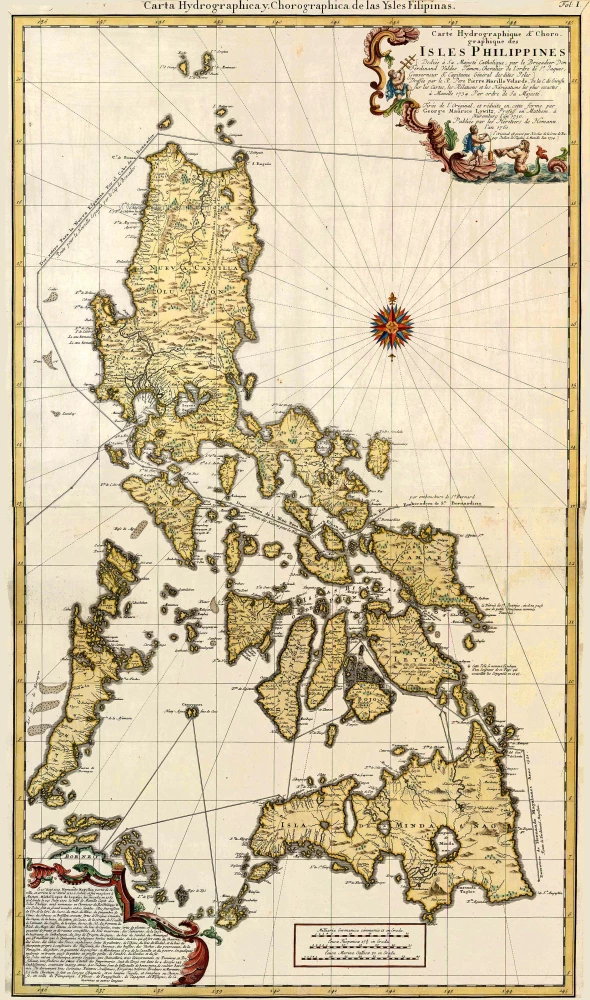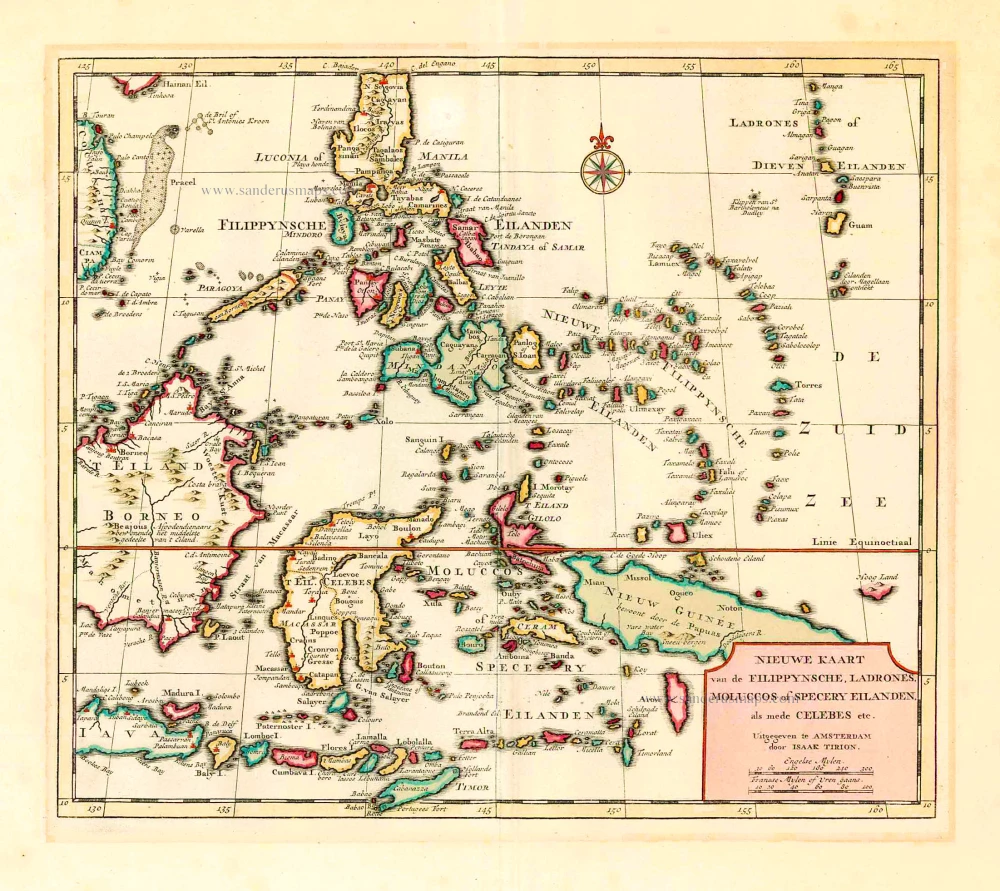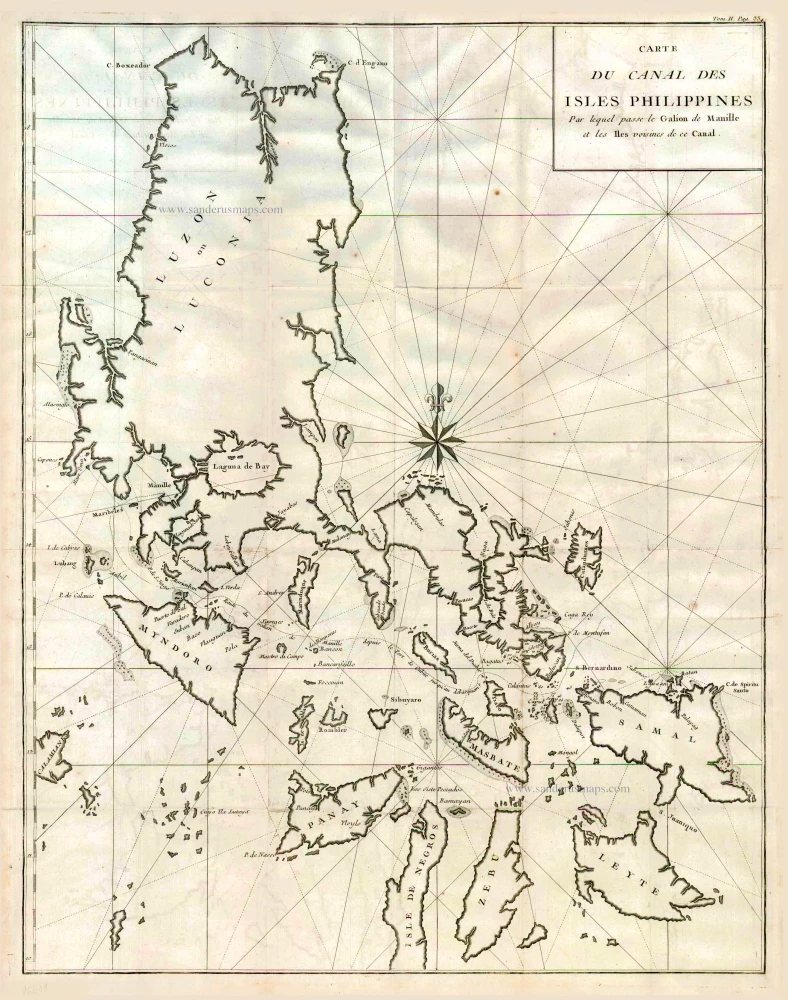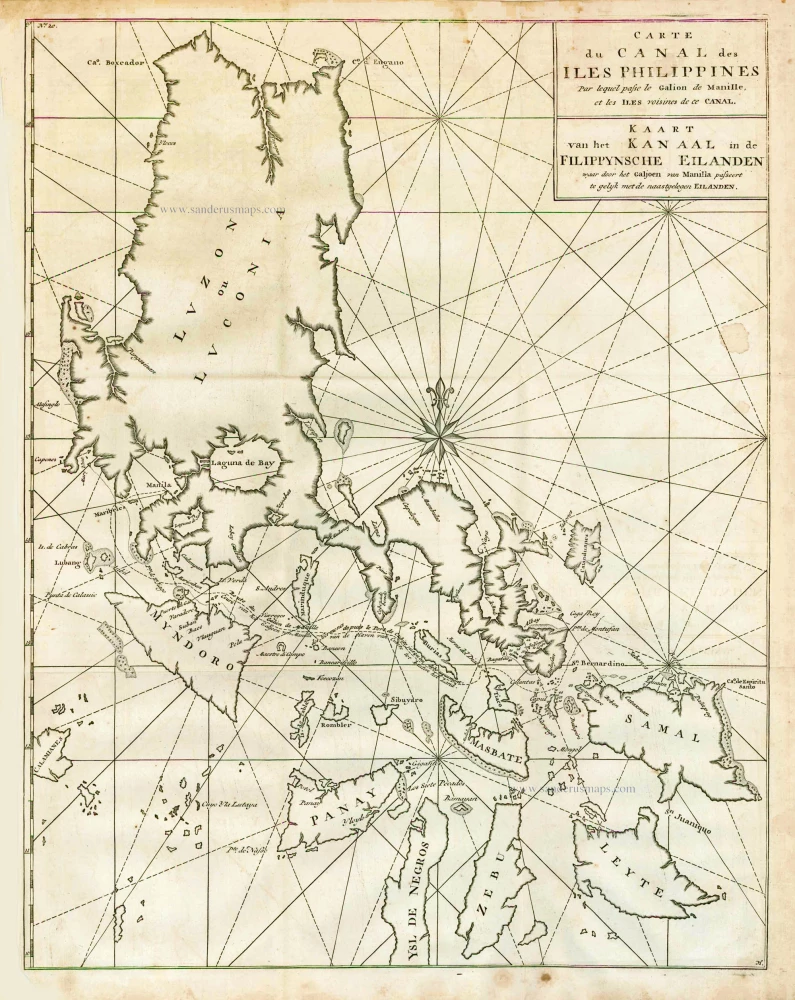The Philippines, by Georg Moritz Lowitz, published by Homann Heirs. 1760-
This two-sheet map is a reduced version of the Carta Hydrographica Chorographica de las Yslas Filipinas by the Jesuit Father Pedro Murillo Velarde, who published it in Manilla in 1734. It was the first and most important scientific map of the Philippines at this time. It shows the maritime routes from Manila to Spain and to New Spain in the New World. Georg Maurice Lowitz, a professor of mathematics, made a reduced version of the map in 1750; the Homann Company published Lowitz’ map in 1760.
The Homann Family
Johann Baptist Homann (1664-1724) was born in Oberkammlach in Southern Germany. Around 1693 Homann moved to Vienna, where he lived and studied printing and copper plate engraving until 1695. In 1702 he founded a map publishing company in Nuremberg, which is recognized as one of the most important German map publishers of the eighteenth century. In the next five years, Homann produced hundreds of maps and developed a distinctive style characterized by heavy detailed engraving, elaborate allegorical cartouche work, and vivid hand colour. He published his first atlas in 1707. Homann's company successfully competed with leading European mapmakers. By 1715 Homann's rising star caught the attention of the Holy Roman Emperor Charles the VI, who appointed him Imperial Cartographer. In the same year, he was also appointed a member of the Royal Academy of Sciences in Berlin. Homann's prestigious title came with several significant advantages, including access to the most up to date cartographic information as well as the "Privilege". In 1716 Homann published his masterpiece Grosser Atlas über die ganze Welt (Grand Atlas of all the World).
After Johann Baptist Homann's death in 1724, Johan Christoph Homann (1703-1730) and other heirs continued the company under the name Homann's Erben (Homann's Heirs) until 1852.
Carte Hydrographique & Chorographique des Isles Philippines. - Dediée à Sa. Majesté Catholique, par le Brigadier Don Ferdinand Valdes Tamon . . . Dressée par le R. Père Pierre Murillo Velarde, ... Tirée de l'original, et réduite en cette forme par George
Item Number: 27402 Authenticity Guarantee
Category: Antique maps > Asia > Southeast Asia
Old, antique map of The Philippines, by Georg Moritz Lowitz, published by Homann Heirs.
Title: Carte Hydrographique & Chorographique des Isles Philippines. - Dediée à Sa. Majesté Catholique, par le Brigadier Don Ferdinand Valdes Tamon . . . Dressée par le R. Père Pierre Murillo Velarde, ... Tirée de l'original, et réduite en cette forme par George
Cartographer: Pierre Murillo Velarde .
Date of the first edition: 1760.
Date of this map: 1760-.
Copper engraving, printed on paper.
Size (not including margins): 930 x 535mm (36.61 x 21.06 inches).
Verso: Blank.
Condition: Hand coloured, excellent.
Condition Rating: A.
From: Grosser Atlas, Nuremberg, Homann Heirs, 1760 or later.
This two-sheet map is a reduced version of the Carta Hydrographica Chorographica de las Yslas Filipinas by the Jesuit Father Pedro Murillo Velarde, who published it in Manilla in 1734. It was the first and most important scientific map of the Philippines at this time. It shows the maritime routes from Manila to Spain and to New Spain in the New World. Georg Maurice Lowitz, a professor of mathematics, made a reduced version of the map in 1750; the Homann Company published Lowitz’ map in 1760.
The Homann Family
Johann Baptist Homann (1664-1724) was born in Oberkammlach in Southern Germany. Around 1693 Homann moved to Vienna, where he lived and studied printing and copper plate engraving until 1695. In 1702 he founded a map publishing company in Nuremberg, which is recognized as one of the most important German map publishers of the eighteenth century. In the next five years, Homann produced hundreds of maps and developed a distinctive style characterized by heavy detailed engraving, elaborate allegorical cartouche work, and vivid hand colour. He published his first atlas in 1707. Homann's company successfully competed with leading European mapmakers. By 1715 Homann's rising star caught the attention of the Holy Roman Emperor Charles the VI, who appointed him Imperial Cartographer. In the same year, he was also appointed a member of the Royal Academy of Sciences in Berlin. Homann's prestigious title came with several significant advantages, including access to the most up to date cartographic information as well as the "Privilege". In 1716 Homann published his masterpiece Grosser Atlas über die ganze Welt (Grand Atlas of all the World).
After Johann Baptist Homann's death in 1724, Johan Christoph Homann (1703-1730) and other heirs continued the company under the name Homann's Erben (Homann's Heirs) until 1852.




